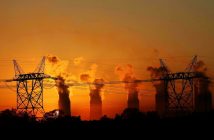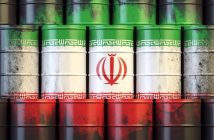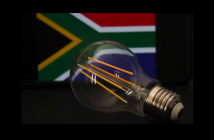- The most recent round of load shedding, which has been implemented by Eskom over the past week, has provided further evidence of the power utility’s increasing inability to supply the level of electricity required by South Africa’s households and industries.
- This phenomenon is likely to increase in severity over the coming years.
- SAPVIA believes that the private sector, due to its extensive financial capacity and its ability to expeditiously identify and provide for their own power requirements, is well placed to alleviate the current generation capacity challenges.
This much is recognised in the recently released Integrated Resource Plan 2019 (IRP 2019), where small-scale embedded generation has been identified as the means of bridging the current electricity supply gap. Photovoltaic generation, which can be quickly deployed, is anticipated to be the key technology behind small-scale embedded generation. SAPVIA believes that up to 2000MW of this small-scale capacity can be added to the energy mix over the next twelve months.
SAPVIA is the representative voice of the solar PV industry in South Africa. Read more
While the IRP 2019 has identified small scale generation as the means to bridging the gap, SAPVIA believes that the bureaucracy associated with the licencing and registration of embedded generation facilities will hamper the rapid absorption of this much-needed supply source into the generation mix. While facilities generating less than 1MW only require municipal or Eskom technical sign-off to supply their owners or feed into the grid, facilities above 1MW still need to undergo the strenuous NERSA licencing process, which can take between 9 months to 1 year to run its course, before the facilities can be commissioned.
SAPVIA believes that the cap of 1MW, above which facilities require NERSA licencing, is arbitrary, and has no technical or commercial basis. In most developed power markets, self-generators can develop their own embedded facilities, and they can connect to the grid if they technically meet the relevant grid codes, without any cap on the size of their facilities. SAPVIA proposes that 10MW is set as an initial cap on projects, as long as the Use of System approvals are granted. We believe that this cap can be reviewed in time.
Furthermore, we urge that municipal bylaws are amended to better-clarify the requirements for grid connection, to reduce the timelines and uncertainties associated with grid access. While we note the potential impact of large scale users becoming electricity self-providers on municipal income streams, we believe that this far offsets the potential impact of businesses shutting down due to the shortage of reliable power.
We therefore urge the Department of Mineral Resources and Energy to swiftly implement any of the legislative or regulatory changes that would be required to allow generators of less than 10MW to generate without undergoing the arduous NERSA licencing process.
Author: Bryan Groenendaal











